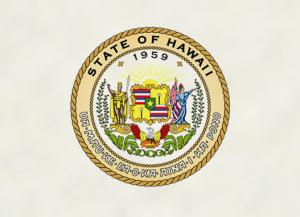Hawaii Endorses Amended DR Plans from HECO

After more than two years of review and technical hearings, the Hawaii Public Utilities Commission has at last confirmed new demand response (DR) initiatives submitted by the HECO Companies — Hawaiian Electric Company, Hawaii Electric Light Company, and Maui Electric Company. The commission had rejected prior iterations of the companies’ DR strategies, sending the utilities back to the drawing board to develop programs that would properly balance state, utility, and consumer interests as Hawaii transitions to an energy market totally reliant on renewables.
As described by the HECO Companies, their revised DR portfolio focuses on four specific grid-centric endeavors:
- Capacity programs, under which customers are compensated for providing capacity to the grid through such mechanisms as time-of-use rates, real-time pricing, critical peak incentives, and/or day-ahead load shifting;
- Fast frequency response programs, which would be specific to Oahu and would compensate eligible customers for engaging in a load-reducing response to a declared contingency event;
- Regulating reserve programs, which are designed to assist the utilities in balancing grid demand by calling on DR resources in response to automatic generation control signals from their energy management system; and
- Replacement reserve programs, which are intended to compensate customers when they reduce load to alleviate the need for the utilities to fire up a fast-start generator.
The companies attested that the DR programs had been developed so as to enable customers to control their consumption and equipment usage in a manner that can impact their net demand for electricity. For instance, HECO said, customers will have an opportunity to participate in programs that allow the utilities to use behind-the-meter technologies to alter the schedule for charging or dispatching a customer’s battery storage or electric vehicle charging systems. They alleged that such interruptions can help the companies better manage the grid’s supply/demand balance. The commission agreed that the updated DR portfolio will provide consumers with a chance to “use their own equipment and behavior to have a role in the management of the electricity grid.”
In looking at those provisions directed at third parties, the commission explained that the revamped DR programs allow the HECO Companies to collaborate and partner with independent parties for purposes of enrolling customers in DR programs. As envisioned by the utilities, such third parties will be able to aggregate and optimize customer-based DR for use by the grid. To give the market for third-party aggregation time to mature, the HECO Companies stated that they will refrain from self-administering customer enrollments in the first year the newly revised DR offerings are in effect.
The commission commended the companies for devising a new portfolio of DR programs that is compatible with the utilities’ overall grid modernization plan, inclusive of expanded use of smart meters. The commission voiced confidence that the enhanced programs will ultimately yield a more flexible and reliable grid capable of advancing the state’s energy policy goal of achieving 100% dependence on renewable resources by 2045.
The commission added that the HECO Companies had properly tailored the new DR measures to assure both technical and economic benefits for the utilities and their customers alike. Moreover, it said, the broader, more high-tech approach reflected in the revised programs will inevitably lead to greater grid stability and reliability.
With respect to how the costs of the revised DR programs will be recovered, the commission accepted the utilities’ recommendation that their existing demand-side management (DSM) surcharge be used, at least temporarily. The commission agreed that the DSM rider was an appropriate mechanism for recoupment of such costs until the companies’ next base rate proceeding, at which time DR program costs can be fully accounted for in HECO’s rate tariffs.
The commission related that the new DR offerings will first be available only on Oahu and Maui before being expanded to the other islands, where they will be phased in as feasible. The commission said that the utilities contemplate beginning the enrollment process for the initial two islands by the second half of the year. Re Hawaiian Electric Co., Inc. et al., Docket No. 2015-0412, Decision & Order No. 35238, Jan. 25, 2018 (Hawaii P.U.C.).



